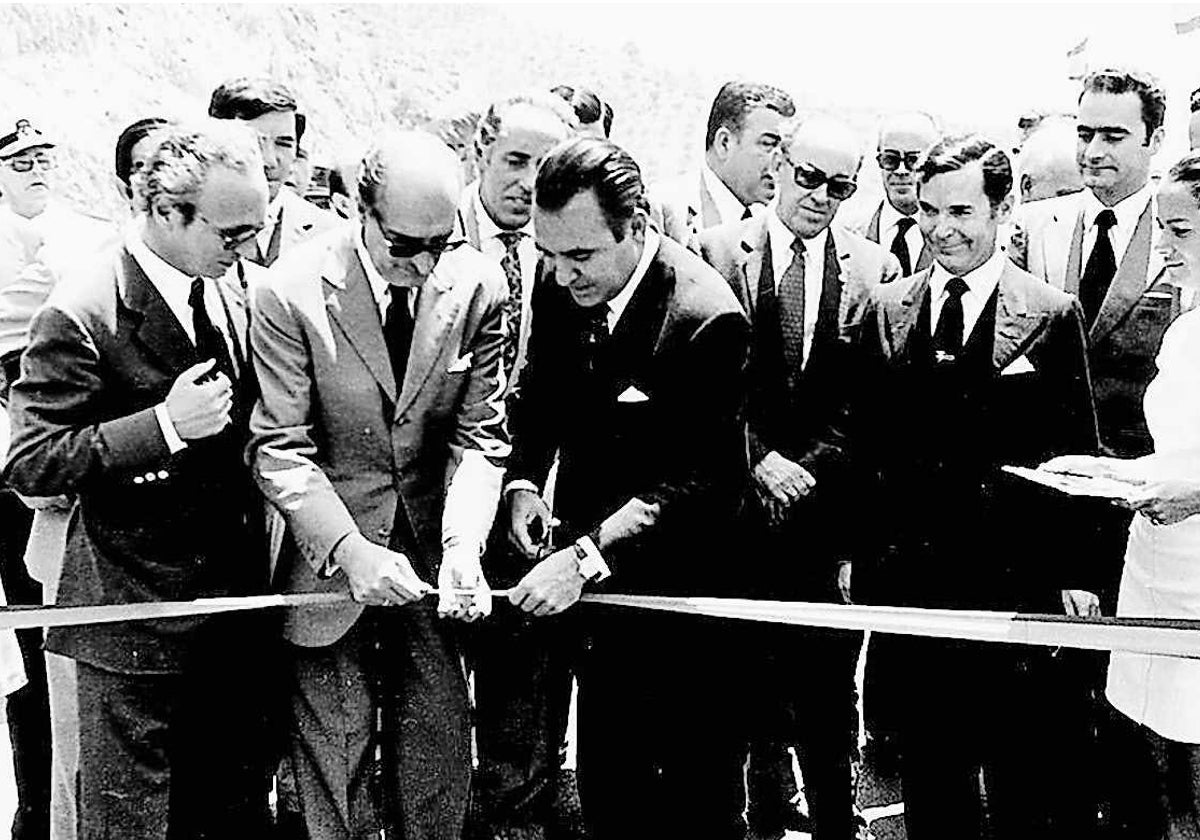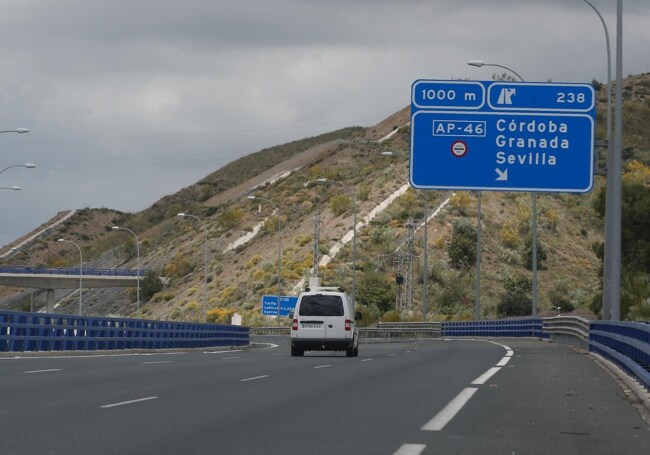

Sections
Highlight

Sometimes key pieces of infrastructure and civil engineering attract all the attention, such as airports or stations. Others, meanwhile, hum away in the background, unnoticed, but are no less important because of their impact on daily life. The A-45 road, which links Malaga city to the Antequera area and inland Granada province, is one of those.
This crucial link from the interior of Spain to the Costa del Sol has just marked fifty years since its opening, with one lane in each direction, on 13 July 1973. The anniversary went by with little fanfare, despite the importance of the road to all who live and work on the entire Costa del Sol.
The Nuevo Acceso (New access) to Malaga, as it was known during its early years, was inaugurated by Gonzalo Fernández de la Mora, Minister of Public Works, at a point near the Agujero reservoir.
He cut the ribbon with the national colours accompanied by the local authorities, including the then mayor of Malaga, Cayetano Utrera Ravassa, and the president of the provincial Diputación, a young Francisco de la Torre (the current mayor of Malaga).
Only those locals over 60 will remember what it was like before the new road sliced through the mountains via the steep Guadalmedina river valley in the early 1970s.
Before what is these days labelled the A-45, the only route to the city and growing tourist resorts from the areas to north, including Madrid, was the narrow, winding mountain road that runs through the Los Montes de Málaga hills.
It is hard to imagine that the old road - which is now mainly a tourist route, the A-7000 towards Colmenar - was the only way in and out of the city and Costa del Sol from the north.
So, for the vast majority of the public, the A-45 - or Las Pedrizas road, as it is often known - has always been there.
Those 56 kilometres of motorway have no dramatic bridges or impressive tunnels (31km from the outskirts of Malaga city to the high point of Las Pedrizas pass and another 25km from that point to the border with Granada province). They are generally undervalued, despite the fact that a large part of the provincial economy depends on them.
Figures illustrate the extent to which there is a strategic dependence on this stretch of road that connects the Costa with inland Spain.
The Average Daily Traffic (ADT) of the road is about 55,000 vehicles (a figure that includes users of the newer, parallel toll motorway, the AP-46 as well as the A-45), according to the DGT traffic authority. This volume of traffic is ten times greater than is was when the Las Pedrizas road was opened in 1973.

The increase in users led to the widening of the single carriageway to convert the road into the A-45 motorway in May 1992. The traffic continued to increase, however, and over the years severe congestion, especially in summer, got worse. The solution was the construction of the toll road (AP-46), which came into service in October 2011.
Every year, some 40 million people cross Las Pedrizas (the high point where the A-45 meets the Granada road). In terms of freight traffic, the lorries that pass through this point move around 40 million tonnes of cargo.
Although criticised at the beginning, the AP-46 toll motorway has relieved pressure on the A-45, which no longer sees tailbacks, except at very specific times or due to accidents. In fact, the toll road now accounts for almost 29 per cent of the vehicles travelling along the north-south route.
Veteran Malaga engineer José Alba and journalist Esther de León are finishing a book on the history of the city's communications with inland Spain. This document compiles the history, statistics, economic data, information and up to 60 interviews with mayors, personalities and prominent residents about their relationship with this road.
José Alba
Engineer
Alba was directly involved, from his former position as municipal engineer, in the design of the new road and its connections with the city.
The main blot in the history of this vital piece of infrastructure, is, according to Alba, a political corruption scandal that delayed the widening of the last section of the road for three years to 1992. There were 21 deaths in accidents at this point alone in one year, which could have been avoided without the delay.
"Las Pedrizas road opened Malaga to the interior," he said. "Until 13 July 1973 it was a city that in its 2,800 years of history had been open to the sea, but closed to the interior. The older road was an adventure, you never knew when or how you were going to get there," said Alba.
Hence the increase in volume throughout its history - from 5,000 to 55,000 vehicles a day - is unparalleled anywhere else.
In addition, the engineer also has praise for the opening of the AP-46. "The fact that the toll motorway that competes with the free dual carriageway has such a high level of take-up is not found anywhere else, and it means that toll roads work better here than elsewhere," he said.
This can be explained in part, he said, by the large volume of traffic from other countries where drivers are more used to having to pay. He added: "The existence of the toll motorway means better conditions for those using the free motorway."
Publicidad
Publicidad
Publicidad
Publicidad
Esta funcionalidad es exclusiva para registrados.
Reporta un error en esta noticia

Debido a un error no hemos podido dar de alta tu suscripción.
Por favor, ponte en contacto con Atención al Cliente.

¡Bienvenido a SURINENGLISH!

Tu suscripción con Google se ha realizado correctamente, pero ya tenías otra suscripción activa en SURINENGLISH.
Déjanos tus datos y nos pondremos en contacto contigo para analizar tu caso

¡Tu suscripción con Google se ha realizado correctamente!
La compra se ha asociado al siguiente email
Comentar es una ventaja exclusiva para registrados
¿Ya eres registrado?
Inicia sesiónNecesitas ser suscriptor para poder votar.